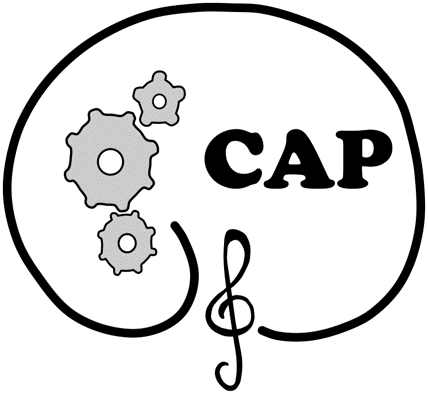The CAP team explores the behavioral and neural mechanisms underlying perception, cognition, and communication in humans and animals, as well as their alteration in various pathologies and neurodevelopmental disorders. We aim to understand how the brain processes and integrates sounds (voices, cries, music, environmental sounds), and how these auditory inputs interact with other sensory modalities, memory, attention, and biological rhythms.
Our research relies on a wide range of methods, from psychoacoustic and behavioral approaches to multimodal brain imaging (PET, MRI, EEG, polysomnography, combined techniques), as well as eye-tracking, actimetry, biological analyses, and bioacoustics. This methodological complementarity allows us to study communication both in naturalistic and laboratory contexts, while opening new clinical perspectives.
Our projects are organized around three main research axes:
- Fundamental mechanisms of auditory perception and cognition
Psychoacoustic studies, voice and music perception, auditory and verbal memory, development and evolution of sensory systems.
- Communication and interaction with the environment
Multisensory integration, perception in natural contexts, learning of environmental statistical regularities, and links between perception, the body, and the environment.
- Clinical and translational applications
Investigation of auditory disorders, disorders of consciousness, autism, epilepsy, and neurodegenerative diseases; development of interventions based on auditory or musical stimulation; and close collaborations with medical and industrial partners.
This integrative approach, bridging basic science and clinical applications, defines the identity of the CAP team.
Finally, the CAP team is committed to developing and implementing ethical scientific practices, integrating human, technical, and environmental dimensions.
Five testing sound booths with high acoustic and electromagnetic attenuation performance
Three hd-EEG systems, one eye-tracker

- 9 Doc
- 4 Research Engineer
- 4 Researchers
- 2 Univ Assoc-Prof
- 3 Hospital Doctor
Examples of ongoing research projects:
- Understanding how predictive processes shape symptoms, perception, and sensory reactivity in autism (Laurie-Anne Sapey-Triomphe)
- Identifying the mechanisms involved in voice perception with a cochlear implant (Étienne Gaudrain)
- Investigating the role of cortico-subcortical brain networks in coma (Maude BeaudoinGobert)
- Identifying the presence and role of circadian rhythms during and after coma (Florent Gobert)
- Studying the impact of musical interventions on behavioral disorders or cognitive functions in neurological diseases (Yohana Lévêque)
- Foundations of an open and rigorous EEG science (Alexandra Corneyllie, European project EEG101)
- Investigating auditory perception, mechanosensory perception, and animal acoustic communication (Nicolas Grimault)
- Understanding conscious and unconscious auditory perception by studying interactions between the brain, the body, and the environment (Fabien Perrin)

RESPONSABLES
Nicolas Grimault & Fabien Perrin











